September is National Preparedness Month, according to FEMA. It’s easy to see why. A lot of bad things happen in Mother Nature this time of year; Colorado the latest in a long series of national disasters to catch the eye of the nation. Few images are as evocative as that of a stranded animal, confused, petrified, and facing an uncertain fate while we sit in front of the TV and wonder, is anyone going to help him? How does animal rescue work?
Katrina
According to Kim Little, my Technical Animal Rescue trainer who taught me in Nicaragua last year, the craziest rescue he ever participated in was a massive pet pot bellied pig stranded in a flooded home during Hurricane Katrina. If you ever meet him someday, ask him about it. Kim’s a pro, active in professional rescue training for decades. The animal rescue component, however, is relatively new.
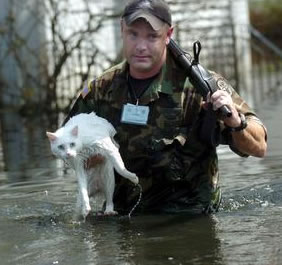 Most anyone who has been active in animal rescue long enough will tell you Katrina was the game changer in disaster response, for many different reasons. It was a mess in general, as we all know, but the animal component was almost nil. People who refused to evacuate because they couldn’t take their pets later required rescue themselves, preferring to risk death than abandon their beloved companion.
Most anyone who has been active in animal rescue long enough will tell you Katrina was the game changer in disaster response, for many different reasons. It was a mess in general, as we all know, but the animal component was almost nil. People who refused to evacuate because they couldn’t take their pets later required rescue themselves, preferring to risk death than abandon their beloved companion.
A person I met last weekend at my SEMS/ICS disaster response training spoke of a story from Katrina, a little girl who had evacuated with her cat. The cat was with her, safe, and she was told by the bus driver that would take them to safety that pets were not allowed. They must put the carrier down and leave the cat, no, there was nowhere for it to go, and they needed to leave, now. He said he was haunted by the sound of her screams as her bus pulled away, leaving the cat alone in the parking lot as he scrambled to find help.
That was in 2005, and it was awful. In 2006, President Bush signed the Pets Evacuation and Transportation Standards Act into law. In a really oversimplified statement, it officially makes pets part of the national disaster response framework. In order for this to really function the way it was intended, though, there needs to be a plan at the local, county, and state levels for pets as well.
ICS
Emergency response trickles up. The National Guard is not called in for a small brush fire in San Diego. However, once that fire spreads beyond what the local fireman can handle, they request aid from the county, then on up to the state, then eventually in huge disasters, a federal level. In order to maintain order and safety in chaos, the manner in which these disasters are managed is consistent across the board: the Incident Command System. ICS provides a standardized response framework that functions the exact same way regardless of whether you’re dealing with a car accident on your street, or a 8.5 earthquake.
It’s absolutely essential; communications breakdown in a rapidly changing situation can mean disaster. Because the system is standardized and the chain of command well defined, you can drop a fireman from Phoenix into Yosemite and he will know exactly what to do.
But is it the same for animal rescuers?
Pet Disaster Aid: The Government Part
As a vet, I can’t just show up to the flood line and ask if there’s a sick pet I can help. I would probably get myself killed standing around where the helicopter is supposed to land or something. This is why ICS is important, and why emergency management teams ask those who have not been trained not to “self deploy” in emergency situations. I’m minimally trained in disasters; my knowledge is pretty specific to pets. I tried to learn water rescue once; in the practice scenario, I killed myself and the victim I was supposed to be helping. My job became “stay on shore and make sure we have enough rope”, which is also essential and as it turns out something I was great at. To truly be helpful in these situations you need two things: a skill that is useful; knowledge of the command structure and who is going to be in charge of you.
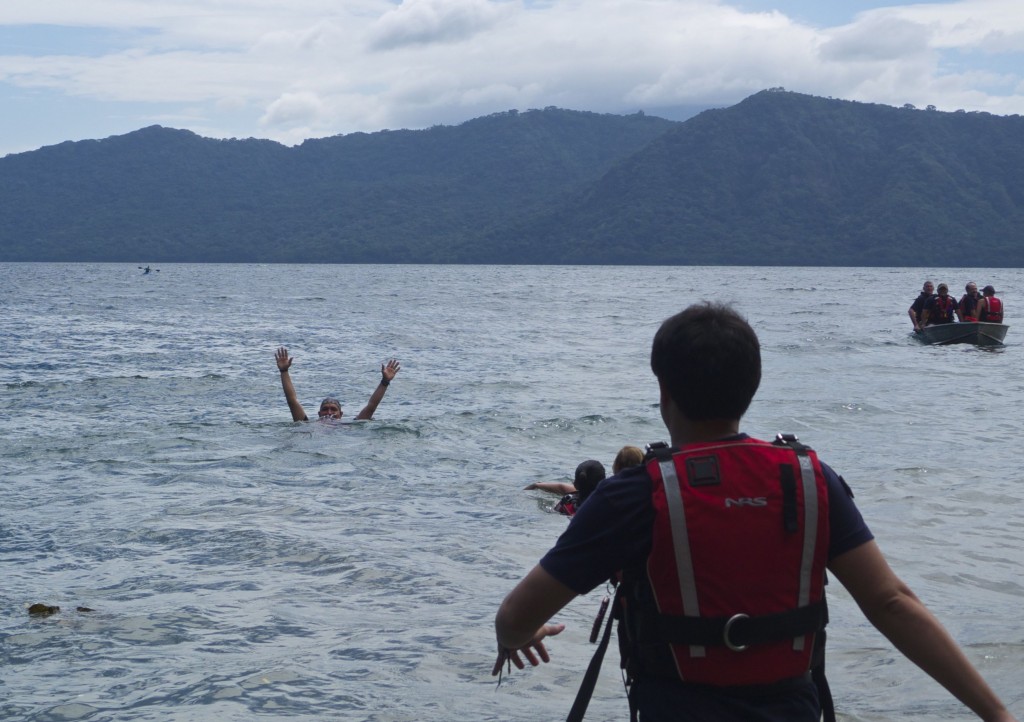
During Hurricane Katrina, there was no one in the official government rescue effort tasked with helping animals. ASPCA and HSUS sent in large scale, well trained relief volunteers, and thank goodness they did because no one else was doing it. But without being part of the official effort, there’s no reimbursement from the government, and more importantly no official way to communicate with the other disaster responders on the ground who may have important information: for example, a person shows up at the Red Cross shelter with a dog; would they even know if/where the emergency shelter is? A fireman doing a swift water rescue on a person realizes the victim is with a horse; who do they call?
With PETS signed into law, states are now working to come up with a clear and well defined animal response plan that integrates into the other structures already in place. On a local level, that means working with animal control and local shelters to provide immediate sheltering and aid. As the situation escalates, larger groups come into play.
In my home state of California, the California Veterinary Medical Reserve Corps- of which I am a member- is the veterinary group that is mobilized on a state level- not until the governor declares a state of emergency. Colorado’s Veterinary Medical Reserve Corps functions similarly, and both are units of the National Medical Reserve Corps. Oversight groups such as PetAid Colorado and CARES in California are tasked with the bigger issue of figuring out how this all should also play out at the local level- all the people in charge before the governor gets involved. As well as pets, they are to come up with plans for all animals: livestock, zoos, farms…. you see how crazy this gets. MASSIVE task.
Private Disaster Aid: So Where is My Money Going?
So hang on, if there’s laws saying the government needs to plan to take care of animals, why are these other groups asking for money? Make no mistake, non-profits/NGOs still have a vital role to play here.
1. There are different type of disaster declarations and not every incident is eligible for state or federal aid. In smaller disasters, the first line of defense is the local community: your local SPCA, shelters, vets, and rescues. Their resources, as you know, are often strained. As a disaster gets larger in scope, their responsibilities only grow.
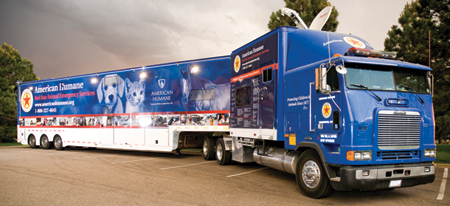
2. An “official” government entity in charge may invite a nonprofit in to help. In Boulder, Animal Control was quickly overwhelmed at the flooding before them. They invited Code 3 Associates and American Humane Association’s Red Star rescue team, both exceptionally well trained animal rescue providers, in to help.
How Can I Help?
1. If you want to know who in Colorado needs help, BlogPaws– itself based in Colorado- has a great article listing local groups in action.
2. If you are a veterinary professional or someone with animal experience and you want to be on call for disasters, try searching “(name of your state) veterinary medical reserve corps”. The ASPCA also has an excellent list of disaster response training courses.
3. If you want to be better prepared for a disaster (and who doesn’t), check out this list of Animal Preparedness Tips from FEMA.
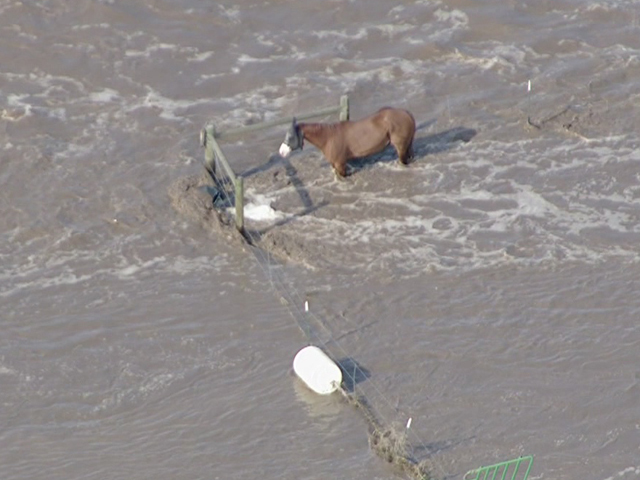
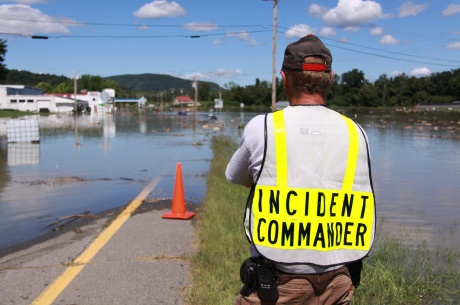






Thanks DR. V, this is an area that most people don’t think about until it is too late. I have long since maintained an emergency preparedness kit that includes essential items for my pets. But, even as prepared as I thought I was, when I reviewed the links in your post I found I was missing a few items, such as a “Pets Inside” sign for my residence.
Isn’t it amazing, I’ve read so many different preparedness articles and each one has a new tip I hadn’t thought of!
Awesome post, Dr V! I’m signing up for the CA veterinary corps, and taking it to work to show the other techs who I know will be interested. 🙂
YAAAY! Techs rock!! (The training guy last weekend said, and he’s right, the techs are more helpful than the vets.)
Dr. V., you are the best!! Thank you for sharing this really important information, and thank you for mentioning that PetAid Colorado is helping out, as that is where I now work. Every time there is a disaster – fire, flood, whatever – we become better prepared to handle the next one. In Colorado, as in California, we’ve had our share of fires and other incidents, and we have really wonderful teams that know each other and work well together. And they are doing all they can for the animals that need help. I didn’t know you were part of your local Veterinary Medical Reserve Corps, but I’m definitely not surprised. You do so much for others 🙂
Did I describe PetAid’s function properly? An arm of the veterinary medical foundation that got renamed, correct, and has disaster response as one of its many functions?
PS I didn’t know that’s where you landed. Awesome.
Yes, you got it right. Thank you, thank you, thank you 🙂
What a great article! I think everyone wants to help in these situations, but few know how to do so. Thanks for clarifying the issue.
Thank you Jean!
Great article and something I’ve been meaning to prepare for quite a while. NOW I will do it!!
Thank you for sharing this information and for the FEMA tips! It always seems so far away when disaster strikes on TV, although we must always be prepared – even those living in sunny CA! We’ve been meaning to prep our animal emergency kit for some time, this article gives us reason to do it sooner than later. Thanks again!
doggyfan
doggielawn.com